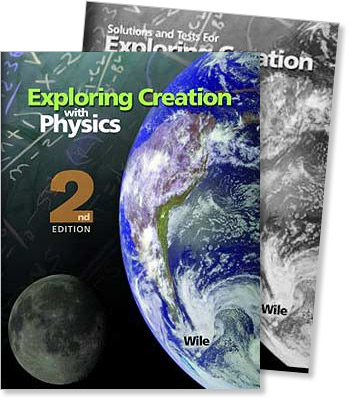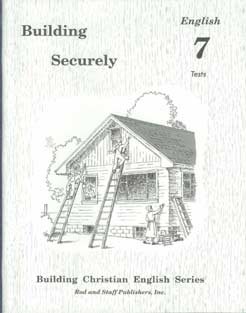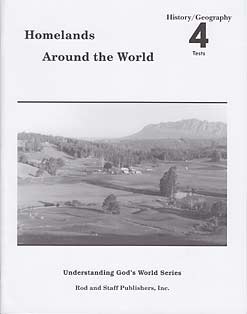
Grade 11 Apologia Physics Set [2nd Ed]
- 6.7 lbs
Item #52-11--
| This set includes: | # in My Cart | ||
|---|---|---|---|
| Pupil Textbook | $87.00 | ||
| Solutions and Tests Manual | $26.00 | ||
| This set includes: 2 items (set discount: 5%) | -$5.65 | ||
Prerequisites: Algebra I, Geometry; basic Trigonometry functions
This college-prep physics course is designed for the student who has completed algebra and has had an introduction to the definitions of sine, cosine, and tangent. It provides a detailed introduction to the methods and concepts of general physics, heavily emphasizing vector analysis; this text is ideal preparation for a university-level physics course. It provides the student with a strong background in one-dimensional and two-dimensional motion, Newtons laws and their application, gravity, work and energy, momentum, periodic motion, waves, optics, electrostatics, electrodynamics, electrical circuits, and magnetism.
- Complete List of Lab Supplies
Table of Contents
Introductory Remarks
- The Metric System
- The Factor-Label Method
- Using Units in Mathematical Equations
- Making Measurements
- Accuracy, Precision, and Significant Figures
- Scientific Notation
- Mathematical Preparation
MODULE #1: Motion In One Dimension
- Introduction
- Distance and Displacement
- Speed and Velocity
- Average and Instantaneous Velocity
- Experiment 1.1: Measuring Average Velocity
- Velocity Is Relative
- Acceleration
- Experiment 1.2: Measuring an Object’s Acceleration
- Average And Instantaneous Acceleration
- Answers to the “On Your Own” Problems
- Review Questions
- Practice Problems
MODULE #2: One-Dimensional Motion Equations and Free Fall
- Introduction
- Relating Velocity, Acceleration, and Time
- Relating Velocity, Acceleration, and Displacement
- Relating Displacement, Velocity, Acceleration, and Time
- Using Our Equations For One-Dimensional Motion
- Free Fall
- Experiment 2.1: The Acceleration Due to Gravity Is the Same for All Objects
- Experiment 2.2: Determining a Person’s Reaction Time
- A More Detailed Look At Free Fall
- Terminal Velocity
- Experiment 2.3: Factors That Affect Air Resistance
- Answers to the “On Your Own” Problems
- Review Questions
- Practice Problems
MODULE #3: Two-Dimensional Vectors
- Introduction
- Vectors
- Adding and Subtracting Two-Dimensional Vectors: The Graphical Approach
- Vector Components
- Experiment 3.1: Vector Components
- Determining A Vector’s Components From Its Magnitude And Direction
- Adding And Subtracting Two-Dimensional Vectors: The Analytical Approach
- Applying Vector Addition To Physical Situations
- Experiment 3.2: Vector Addition
- Answers to the “On Your Own” Problems
- Review Questions
- Practice Problems
MODULE #4: Motion in Two Dimensions
- Introduction
- Navigation in Two Dimensions
- Projectile Motion in Two Dimensions
- The Range Equation
- Experiment 4.1: The Two Dimensions of a Rubber Band’s Flight
- Two-Dimensional Situations In Which You Cannot Use The Range Equation
- Experiment 4.2: Measuring the Horizontal Speed of an Object without a Stopwatch
- Answers to the “On Your Own” Problems
- Review Questions
- Practice Problems
MODULE #5: Newton’s Laws
- Introduction
- Sir Isaac Newton
- Newton’s First Law
- Experiment 5.1: Inertia
- Newton’s Second Law
- Mass And Weight
- The Normal Force
- Friction
- Experiment 5.2: The Frictional Force
- An Equation For The Frictional Force
- Newton’s Third Law
- Answers to the “On Your Own” Problems
- Review Questions
- Practice Problems
MODULE #6: Applications of Newton’s Second Law
- Introduction
- Translational Equilibrium
- Translational Equilibrium And Measuring Weight
- Experiment 6.1: Measuring Acceleration in an Elevator
- Rotational Motion And Torque
- Experiment 6.2 What Causes Rotational Acceleration?
- Rotational Equilibrium
- Objects On An Inclined Surface
- Experiment 6.3: Measuring a Coefficient of Static Friction
- Applying Newton’s Second Law To More Than One Object At A Time
- Answers to the “On Your Own” Problems
- Review Questions
- Practice Problems
MODULE #7: Uniform Circular Motion and Gravity
- Introduction
- Uniform Circular Motion
- Centripetal Force and Centripetal Acceleration
- Experiment 7.1: Centripetal Force
- The Source of Centripetal Force
- A Fictional Force
- Gravity
- Circular Motion Terminology
- Gravity and the Motion of Planets
- Answers to the “On Your Own” Problems
- Review Questions
- Practice Problems
MODULE #8: Work and Energy
- Introduction
- The Definitions of Work and Energy
- The Mathematical Definition of Work
- Kinetic and Potential Energy
- The First Law of Thermodynamics
- Experiment 8.1: Energy in a Pendulum
- Friction, Work, And Energy
- Experiment 8.2: Estimating the Work Done by Friction
- Energy And Power
- Answers to the “On Your Own” Problems
- Review Questions
- Practice Problems
MODULE #9: Momentum
- Introduction
- Definition Of Momentum
- Impulse
- Experiment 9.1: Egg Drop
- The Conservation Of Momentum
- Experiment 9.2: Momentum and Energy Conservation
- The Mathematics Of Momentum Conservation
- Angular Momentum
- Answers to the “On Your Own” Problems
- Review Questions
- Practice Problems
MODULE #10: Periodic Motion
- Introduction
- Hooke’s Law
- Experiment 10.1: Hooke’s Law
- Uniform Circular Motion: An Example Of Periodic Motion
- The Mass / Spring System
- Experiment 10.2: The Characteristics of a Mass / Spring System
- The Mathematics Of The Mass / Spring System
- More Analysis Of Experiment 10.2
- Potential Energy In A Mass / Spring System
- The Simple Pendulum
- Answers to the “On Your Own” Problems
- Review Questions
- Practice Problems
MODULE #11: Waves
- Introduction
- Waves
- The Physical Nature of Sound
- Experiment 11.1: Frequency and Volume of Sound Waves
- The Doppler Effect
- Experiment 11.2: The Doppler Effect
- Sound Waves in Substances Other Than Air
- Sound Waves Beyond the Ear’s Ability to Hear
- The Speed of Light
- Light as a Wave
- Light as a Particle
- Biographies of Two Important Physicists
- Answers to the “On Your Own” Problems
- Review Questions
- Practice Problems
MODULE #12: Geometric Optics
- Introduction
- The Law of Reflection
- Experiment 12.1: The Law of Reflection
- Flat Mirrors
- Spherical Mirrors
- Ray Tracing In Concave Spherical Mirrors
- Experiment 12.2: Real and Virtual Images in a Concave Mirror
- Ray Tracing In Convex Spherical Mirrors
- Snell’s Law Of Refraction
- Experiment 12.3: Measuring the Index of Refraction of Glass
- Converging Lenses
- Diverging Lenses
- The Human Eye
- Answers to the “On Your Own” Problems
- Review Questions
- Practice Problems
MODULE #13: Coulomb’s Law and the Electric Field
- Introduction
- The Basics of Electric Charge
- Experiment 13.1: Attraction and Repulsion
- Experiment 13.2: Making and Using an Electroscope
- Electrostatic Force and Coulomb’s Law
- Multiple Charges and the Electrostatic Force
- The Electric Field
- Calculating the Strength of the Electric Field
- Applying Coulomb’s Law to the Bohr Model of the Atom
- Answers to the “On Your Own” Problems
- Review Questions
- Practice Problems
MODULE #14: Electric Potential
- Introduction
- Electric Potential
- Electric Potential, Potential Energy, and Potential Difference
- Potential Difference and the Change in Potential Energy
- Conservation of Energy in an Electric Potential
- Capacitors
- Experiment 14.1: Making a Parallel-Plate Capacitor and Storing Charge
- An Application Of Capacitors
- How A Television Makes Its Picture
- Answers to the “On Your Own” Problems
- Review Questions
- Practice Problems
MODULE #15: Electric Circuits
- Introduction
- Batteries, Circuits, and Conventional Current
- Resistance
- Experiment 15.1: Current and Resistance
- Electric Heaters
- Electric Power
- Switches And Circuits
- Experiment 15.2: Building a Simple Circuit to Turn on a Light Bulb
- Series And Parallel Circuits
- Experiment 15.3: Series and Parallel Resistors
- The Mathematics of Series and Parallel Circuits
- Fuses and Circuit Breakers
- Current and Power in Series and Parallel Circuits
- Analyzing More Complicated Circuits
- Answers to the “On Your Own” Problems
- Review Questions
- Practice Problems
MODULE #16: Magnetism
- Introduction
- Permanent Magnets
- Magnetic Fields
- How Magnets Become Magnetic
- Experiment 16.1: Oersted’s Experiment
- Experiment 16.2: Diamagnetic, Paramagnetic, and Ferromagnetic Compounds
- The Earth’s Magnetic Field
- The Magnetic Field of a Current-Carrying Wire
- Faraday’s Law of Electromagnetic Induction
- Using Faraday’s Law of Electromagnetic Induction
- Alternating Current
- Some Final Thoughts
- Answers to the “On Your Own” Problems
- Review Questions
- Glossary
- Appendix A
- Appendix B
- Appendix C: A Complete List of Lab Supplies
- Index









